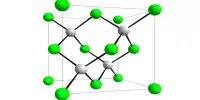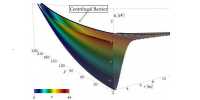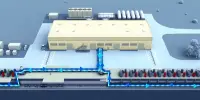Hydrogen is the simplest and most common element in the universe. The stars and giant planets are made of it. It is a very strange material with some striking features. A particularly disturbing phenomenon of hydrogen occurs inside this giant planet: under incredible concentrations, the gas turns into a metal.
On the surface of giant planets, hydrogen remains a molecular gas but extreme compression deep inside them breaks the covalent bonds inside the hydrogen molecule and the gas becomes a metal that conducts electricity. The employed artificial intelligence (AI) algorithm suggests that the transition from molecular to atomic hydrogen is gradual and smooth. The team believes the transfer is not sudden. Hydrogen under extreme pressure will not suddenly change its metallic shape.
The smooth transition to the metallic stage is very important. Any hard or first-order, water boiling and evaporating is an example of change. It also has an open critique. We know that water boils at 100 degrees centigrade (212 degrees Fahrenheit) under sea level pressure.
Dr. Bingqing Cheng, the lead author of Cavendish Laboratories in Cambridge, said in a statement, “The existence of metallic hydrogen was theoretically created over a century ago, but we do not know how this test process took place, due to the difficulty in recovering from the extreme stress conditions inside the giant planet in a laboratory setting, and the complexity of large hydrogen systems.”
It is generally assumed that the transfer of dense hydrogen is the first order, but using machine learning to mimic the interaction between hydrogen atoms they discovered that this did not happen. “We have reached an amazing conclusion and found evidence for the continuous conversion of solid hydrogen into molecules instead of the first order,” Cheng said.
It is expected that this state could only occur at a pressure exceeding 5 million atmospheres, if not a limited condition for our experimental setups. The experimental creation of metallic hydrogen was a controversial area of research where the claim of discovery has been denied. A smooth transition suggests that a secret critique point exists instead of an open problem point that it usually induces other abnormalities and can help explain what happens inside the gas giants.
The simulations have never been better. Quantum and statistical mechanics equations that refer to the behavior of removing hydrogen atoms under extreme conditions of metal conversion; even in the case of highly advanced supercomputers, it was much higher. This is where machine learning comes in. This method allowed the team to modify the simulation cyclically by getting more and more accurate details of the reality without going beyond the capabilities of the computer.
















